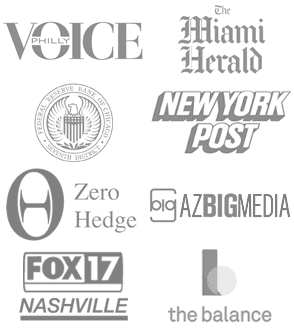Home equity loans and lines of credit have become pragmatic tools for homeowners seeking to leverage their property’s value. With average home prices stabilizing around $400,000 and interest rates hovering between 8-9% for these 2nd mortgage products, they offer a way to fund renovations, consolidate debt, or cover emergencies without refinancing the primary mortgage. A home equity loan provides an opportunity for homeowners to get cash out with a lump sum repaid in fixed installments, while a HELOC functions like a credit card with a draw period. Both of these 2nd mortgages tap into the equity—the difference between your home’s market value and outstanding mortgage—typically allowing borrowing up to 80-85% of that equity.
However, not everyone qualifies for an equity loan or HELOC. Banks and lenders scrutinize applications rigorously to mitigate risk, especially amid rising delinquencies and economic uncertainties. Home equity loan disqualifications often stem from financial instability, property issues, or credit problems. Understanding these barriers is crucial, as denial can impact your credit score further and delay financial plans. We published this article to explore the most common disqualifying factors for home equity loans based on 2025 lender standards. The RefiGuide will examine four case studies to illustrate real-world scenarios. By addressing these issues proactively, you can improve your odds of qualifying for a home equity loan that meets your needs.
Key Disqualifying Factors for Home Equity Loans in 2025
Mortgage lenders evaluate multiple criteria, including creditworthiness, equity levels, and income stability.
We listed the most common reasons that home equity loan applicants are disqualified.
The RefiGuide editorial staff even updated for current market conditions.
- Insufficient Home Equity
The cornerstone of any home equity product is your property’s equity. In 2025, most lenders require at least 15-20% equity after accounting for the new loan. If your home is valued at $300,000 with a $250,000 mortgage, you have only $50,000 (16.7%) in equity—potentially too low if lenders cap at 85% combined loan-to-value (CLTV). Falling below this threshold disqualifies you, as lenders fear default risks in declining markets. Recent appraisals showing value drops due to economic slowdowns exacerbate this. Being “underwater” (owing more than the home’s worth) is an automatic denial.
- Low Credit Score
Credit scores are a primary gatekeeper. For 2025, a minimum of 620-680 is standard, with scores below 620 often leading to outright rejection. Lenders view low scores as indicators of repayment unreliability. Even if approved, sub-700 scores result in higher rates (up to 10-12%), increasing costs. Factors like missed payments or high utilization contribute, and with FICO updates emphasizing payment history, recent delinquencies are red flags.
- High Debt-to-Income (DTI) Ratio
Your DTI—monthly debt payments divided by gross income—must typically be below 43-50%. If adding the equity loan pushes it higher, disqualification follows, as it signals overextension. In 2025, with student loans and credit card debt averaging $1.2 trillion nationally, many applicants exceed this. Lenders calculate both front-end (housing-related) and back-end (all debts) DTIs.
- Unstable or Insufficient Income
Lenders demand verifiable, steady income. Self-employed individuals or those with gig economy jobs face scrutiny, needing two years of tax returns. Unemployment, recent job changes, or income below $50,000 annually can disqualify, especially if it doesn’t cover proposed payments. In volatile 2025 job markets, lenders prioritize W-2 stability over variable earnings.
- Poor Credit History or Recent Negative Events
Beyond scores, your credit report matters. Recent bankruptcies (within 2-7 years), foreclosures, or judgments are disqualifying. Collections, liens, or high inquiries signal risk. Chapter 7 bankruptcies linger for 10 years, blocking approvals.
- Property Issues or Type
Not all homes qualify. Investment properties, condos, or manufactured homes may face restrictions. Poor condition—revealed in appraisals—or environmental hazards lead to denials. In 2025, with climate concerns, flood-zone properties require extra insurance, complicating approvals.
- High Outstanding Mortgage Balance
If your primary mortgage is large relative to home value, adding equity debt increases CLTV beyond 85-90%, triggering denial. Recent refinances or cash-outs exacerbate this.
- Age or Citizenship Status
While not direct disqualifiers, borrowers under 18 or non-permanent residents face hurdles. Lenders prefer U.S. citizens or green card holders for enforceability.
- Inadequate Documentation
Failing to provide timely docs—tax returns, pay stubs—delays or denies applications. In digital 2025, incomplete uploads are common pitfalls.
- Market or Lender-Specific Restrictions
Economic downturns prompt tighter standards. Some lenders avoid certain states or cap loan amounts.
These factors interplay; a low score might be overlooked with high equity, but combinations often lead to denial.
Case Study 1: Insufficient Equity After Market Dip
John, a 45-year-old homeowner in California, applied for a $100,000 home equity loan in March 2025. His home, purchased for $500,000 in 2020, had a $350,000 mortgage. An appraisal valued it at $480,000—down due to local market softening—yielding only $130,000 equity (27%). After the loan, CLTV would exceed 90%, disqualifying him. John waited six months, paid down his mortgage, and reapplied successfully after values rebounded.
Case Study 2: Low Credit Score from Recent Delinquencies
Maria, a 32-year-old nurse in Texas, sought a HELOC for $50,000 in June 2025. Her score was 590, impacted by pandemic-era medical bills leading to collections. Despite 25% equity and stable $70,000 income, lenders denied her, citing risk. She disputed errors, paid off debts, and boosted her score to 650, qualifying three months later at a higher rate.
Case Study 3: High DTI from Student Loans
David, a 38-year-old teacher in New York, applied in April 2025 for $80,000 to consolidate debt. Earning $60,000, his DTI was 48% pre-loan due to $40,000 student debt. The new payment pushed it to 55%, leading to denial. He refinanced student loans first, lowering DTI to 40%, and was approved in July.
Case Study 4: Unstable Income as a Freelancer
Lisa, a 50-year-old freelancer in Florida, requested a $120,000 loan in May 2025. With variable income averaging $80,000 but fluctuating, and only one year of tax returns, lenders deemed her unstable despite 30% equity and 720 score. She provided bank statements for two years and a co-signer, securing approval after 45 days.
Overcoming Home Equity Loan Disqualifications and Alternatives
Disqualifications for home equity loans in 2025 often boil down to risk assessment—lenders protect against defaults in uncertain times. If denied, review your denial letter for specifics, then improve credit, reduce debt, or build equity. Alternatives include personal loans (higher rates but no equity needed), 401(k) loans, or credit counseling. Shop multiple home equity lenders, as standards vary. With preparation, many overcome barriers, turning home equity into a powerful financial tool.
Top 5 Non-Prime Home Equity Loan Products in 2025
For many homeowners, traditional home equity loans or HELOCs are out of reach due to credit challenges, income documentation hurdles, or property restrictions. Fortunately, several non-prime loan products exist to help borrowers tap into their home equity. While terms are often less favorable than prime loans, these alternatives can provide essential access to funds for debt consolidation, investment, or renovations.
1. Bad Credit Home Equity Loan
Bad credit home equity loans are designed for borrowers with credit scores as low as 500–580. While home equity rates are typically higher than traditional products, these loans allow homeowners with missed payments or recent credit issues to unlock their equity. Lenders focus on the value of the home and available equity rather than spotless credit history. This option helps borrowers refinance debt, fund large expenses, or avoid foreclosure when conventional lenders would deny them.
2. Hard Money Home Equity Loan
Hard money loans are short-term, asset-based loans funded by private investors or companies. Approval is based almost entirely on the property’s value rather than the borrower’s income or credit. These loans usually carry higher interest rates (often 9%–15%) and shorter terms, but they can fund in days rather than weeks. They’re especially useful for homeowners or investors needing fast cash for property flips, urgent debt repayment, or time-sensitive opportunities.
3. No Doc HELOC
A No Documentation home equity line of credit allows homeowners to borrow against equity without traditional income verification. Instead of tax returns or pay stubs, lenders may use bank statements, asset accounts, or rental income to determine eligibility. Interest rates can be variable and slightly higher, but flexibility makes this option ideal for self-employed borrowers or those with irregular income streams. It provides revolving credit access with fewer documentation requirements.
4. Bank Statement Second Mortgage
For self-employed homeowners, a bank statement second mortgage offers a practical alternative to traditional underwriting. Instead of W-2s, lenders review 12–24 months of bank deposits to calculate income. This loan functions as a second lien on the property, providing a lump sum that can be used for business expansion, renovations, or debt consolidation. While rates are higher than prime loans, this option bridges the gap for borrowers with strong cash flow but nontraditional earnings.
A No Appraisal HELOC allows qualified homeowners to access equity without waiting for a full appraisal, which can speed up approval by several weeks. Instead, lenders may use automated valuation models (AVMs) or tax assessments. These products are ideal for borrowers who need fast access to funds for emergencies, renovations, or investment opportunities. Though loan amounts may be capped, they offer a quicker, more convenient path to tapping equity. Reputable companies like West Capital Lending are helping thousands of homeowners a month get a quick cash HELO with no formal appraisal required.
Non-prime home equity products provide valuable solutions for borrowers excluded from traditional lending. Whether you’re dealing with poor credit, lack of documentation, or need fast funding, options like bad credit loans, hard money financing, no-doc HELOCs, bank statement loans, and no appraisal HELOCs can open doors to much-needed financial flexibility. As with any loan, carefully review terms, rates, and risks before proceeding, but for many homeowners, these programs can serve as a lifeline.
Would you like me to also create a comparison table with the typical credit score requirements, loan-to-value (LTV) limits, and average interest rate ranges for each of these products? That could make it easier for readers to see side-by-side differences.

